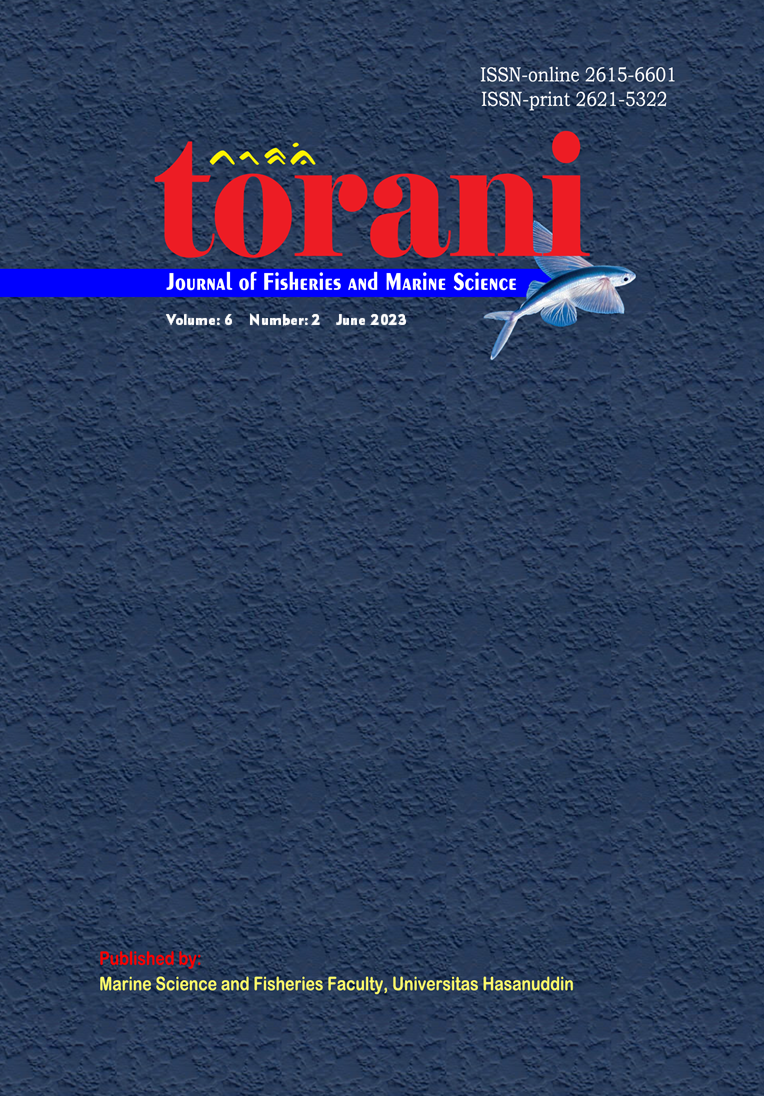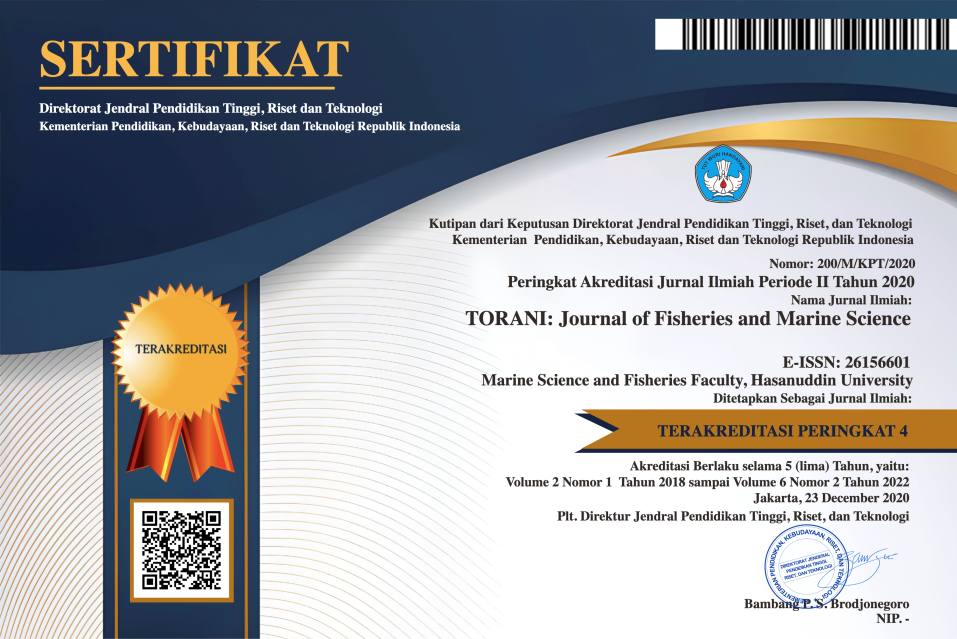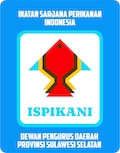The Catch of Little Tuna (Euthynnus sp.) in Relation to Thermal Front in the Makassar Strait
DOI:
https://doi.org/10.35911/torani.v6i2.27191Keywords:
little tuna , thermal front, Makassar StraitAbstract
The Makassar Strait waters area is a potential area for the utilization of marine fishery resources in Indonesia especially for large pelagic fisheries because it is one of the migration trajectories of little tuna (Euthynnus sp.). In order to optimally utilize tuna resources, remote sensing technology based on oceanographic satellite imagery can be relied upon to facilitate identification, prediction, and spatial and temporal mapping of potential fishing areas. This study aims to study the phenomenon of oceanography (thermal front) as an indicator of potential for little tuna fishing areas in the Makassar Strait. Primary data was obtained through in-situ data collection (direct observation in the field by following fishing operations using the purse seine, while secondary data consisting of oceanographic data such as sea surface temperature and sea surface chlorophyll-a concentrations sourced from satellite imagery data (Aqua satellite with MODIS sensor). The distribution of the thermal front was analyzed using ArcGIS 10.4 software to determine the relationship between little tuna fishing productivity and the oceanographic phenomenon. Based on the analysis results, total of 61 positions for little tuna fishing using a purse seine, five (5) fishing positions were in the thermal front area, where the catch of little tuna is higher than the average catch outside the area. These results indicate that the thermal front can be used as an indicator of potential for little tuna fishing areas in the Makassar Strait.Downloads
References
Cayula, J.F., Cornillon, P., 1992. Edge detection algorithm for SST images. J. Atmos. Ocean. Technol. 9, 67–80.
Gordon, A.L. 2005. Oceanography of Indonesian Seas and Their Through Flow. Oceanography 18 (4): 14–27.
Hidayat R, M. Zainuddin, A.R.S. Putri, Safruddin. 2019. Skipjack tuna (Katsuwonus pelamis) catches in relation to chlorophyll-a front in Bone Gulf during the southeast monsoon. AACL Bioflux, 2019, Volume 12, Issue 1.
Mustasim, M. Zainuddin dan Safruddin. 2015. Thermal dan Klorofil a Font Hubungannya dengan Hasil Tangkapan Ikan Cakalang pada Musim Peralihan Barat-Timur di Perairan Seram. Jurnal IPTEKS Pemanfaatan Sumberdaya Perikanan, 2(4):294 – 304.
Safruddin, R. Hidayat, M. Zainuddin. 2018. Effects of environmental factors on anchovies Stolephorus sp. distribution in Bone Gulf, Indonesia AACL Bioflux 11(2):387-393.
Safruddin, B. Aswar, M. Rijal Ashar, R Hidayat, Y K Dewi, M. T Omar, S. A Mallawa and M Zainuddin. 2019. The Fishing Ground of Large Pelagic Fish During the Southeast Monsoon in Indonesian Fisheries Management Area-713. IOP Conference Series: earth and environmental science. Volume 370.
Safruddin, R. Hidayat, dan M. Zainuddin. 2020. Daerah Penangkapan Ikan Cakalang berbasis data citra Oseanografi di Wilayah Pengelolaan Perikanan (WPP) 713. TORANI: Journal Fisheries and Marine Science. Volume 3 nomor 2. Hal 51 – 60.
Safruddin, R. Hidayat, S. A. Farhum, dan M. Zainuddin. 2021. The use of statistical models in identifying skipjack tuna habitat characteristics during the Southeast Monsoon in the Bone Gulf, Indonesia. Biodiversity Journal of biological Diversity, Volume 23, Issue 4, April 2022 ISSN 208-4722.
Sprintall, J and W.T Liu. 2005. Ekman mass and Heat Transport in The Indonesian Seas Oceanography of Indonesian Seas and Their Through flow. Oceanography 18 (4): 89–97.
Zainuddin M, S. A. Farhum, Safruddin, M. B. Selamat, Sudirman S, N. Nurdin. 2017. Detection of pelagic habitat hotspots for skipjack tuna in the Gulf of Bone -Flores Sea, southwestern Coral Triangle tuna, Indonesia. PLoS ONE 12(10): e0185601. https://doi.org/10.1371/journal.pone.0185601.



















